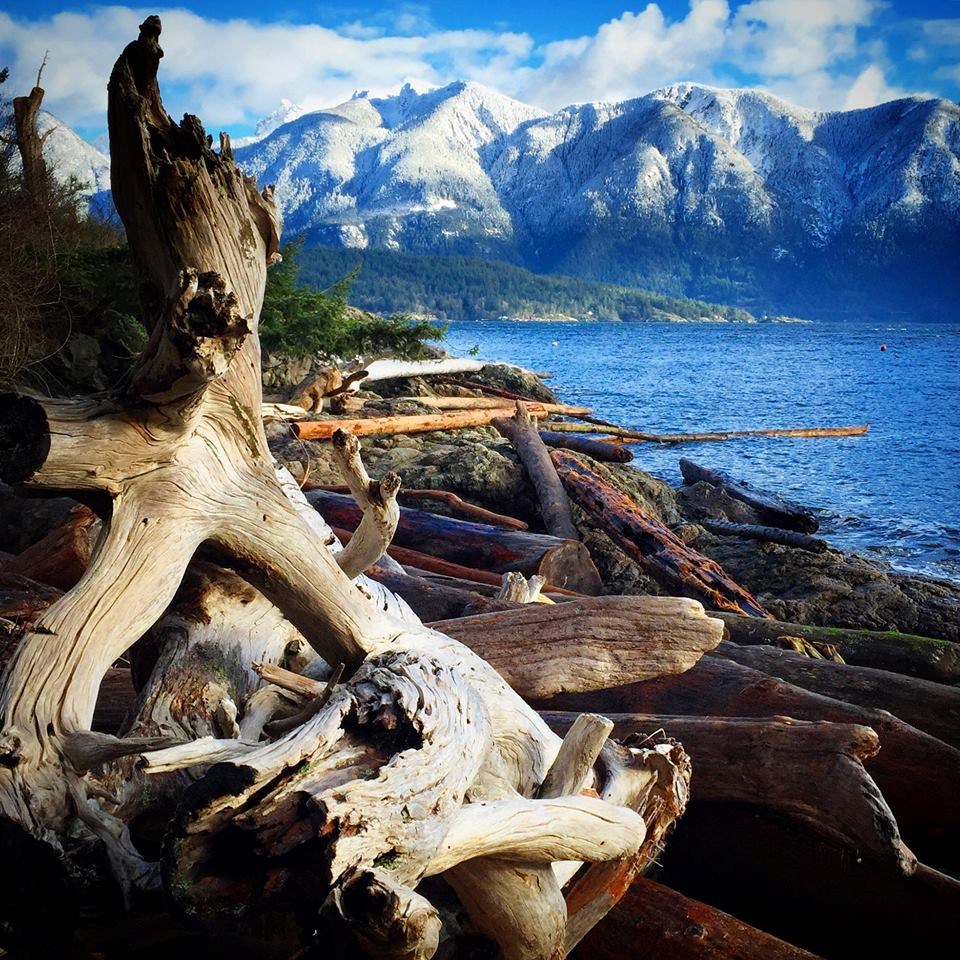November was such a dark month we put up the outdoor lights earlier than usual. The kitchen is ablaze with so many strings of colourful lights I can cook supper by them. In the living room, the large fallen tree branch that I dragged from the forest carries a burden of white lights and ornaments given to me by friends. Not to rival the display at the Little Red Church, of course, but bright and cheerful.
When the editor of The Undercurrent asked if I would write something about the Winter Solstice, I couldn’t refuse. I am obsessed by this event, this particular Holy Day of the Earth. Not only is December 21st my birthday, I’ve written and recorded a song about the Winter Solstice, as well as a screenplay and a novel. And I continue to gather solstice tidings, such as this fascinating connection: bull kelp, the seaweed with a large round bulb perfect for making trumpets, starts to grow on December 21st and stops growing on September 21st, the Autumn Equinox, when the balance of hours of night and day are more or less equal.
Since ancient times, humans have celebrated the return of the light. It was called Saturnalia in ancient Rome; in China, the Dongzhi Festival; Yule in Germany and Yalda in Iran. Hebrews all over the world celebrate Chanukah. Stonehenge, England’s favourite prehistoric monument, was built to align with the winter and summer solstices.
The word solstice is derived from the Latin sol (sun) and sistere (to stand still), because at the solstice the Sun appears to stand still in its downward path before reversing direction. That’s for the northern hemisphere; in the southern hemisphere, they celebrate the Summer Solstice at this time. If you want the scientific explanation, the Winter Solstice occurs when the sun reaches its most southerly declination of 23.5 degrees. In other words, when the North Pole is tilted 23.5 degrees away from the sun. This year, it’s exactly 8:28 am Pacific Time on December 21st.
For two million years, humans have feasted on the energy of the sun. The Winter Solstice offers us a moment to give thanks for that gift of fire, the gift of life. As we begin to leave the time of darkness and gradually return to longer, brighter days, it’s also a time to think more gratefully about darkness, the rich fecund darkness out of which all life is born. In the spring, we plant our seeds in the dark soil. In the darkness of the womb, new life is nurtured. The darkness soothes us to sleep and welcomes our dreams. Our most creative ideas come out of the dark, that not-knowing place.
On the 21st the Sun pauses in this the longest night of the year. Here on Bowen, untarnished by street lamps, the darkness is conducive to deep rest. We could take inspiration from the Sun, make time to pause, to rest, to reflect, that we might wake up tomorrow and continue to work toward a brighter day.
Wishing you all a restful Winter Solstice!



